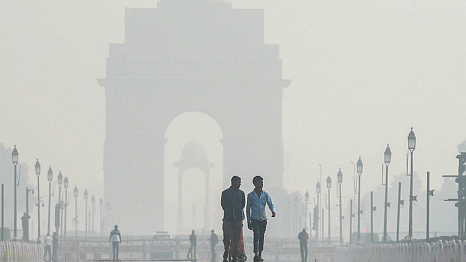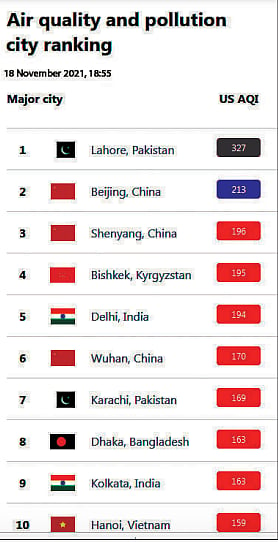Poisoned Air: Delhi-NCR goes through its winter charade
As air quality in the National Capital Region (NCR) remained ‘very poor’, Delhi Government this week offered to shut down Delhi

As air quality in the National Capital Region (NCR) remained ‘very poor’, Delhi Government this week offered to shut down Delhi. ‘Ready for a lockdown’, the Government’s counsel bravely told the Supreme Court. The Supreme Court fumed and fretted and suggested people stay indoors and work from home.
Schools and colleges were ordered to shut down and trucks, barring those carrying essential goods, were barred from entering the capital. Half the thermal power stations in the NCR were ordered to close. The court ominously warned of ‘harsher steps’ after November 21. As if on cue, chief minister Arvind Kejriwal appeared in TV and newspaper advertisements to exhort motorists to switch off the engines at traffic signals. We together shall overcome, he added reassuringly.

Despite the annual charade, air quality on Thursday remained as bleak. It was still very poor with an AQI of 344 (anything above 100 is considered unsatisfactory), though it was an improvement on the AQI hovering around 500 just after Diwali.
AQI between 101-150 is considered unhealthy for sensitive groups, 201 to 300 very unhealthy for everyone and the final slab, 301 to 500 is deemed to be hazardous. Beyond that, it would appear there is no point in keeping score anymore because we are doomed. Even five minutes of inhaling hazardous air is considered damaging to the lungs of a healthy person.
Delhi wallahs darkly shared messages saying that a University of Chicago study concluded that bad air killed a million people worldwide every year. The same study suggested that people in the North Indian plains were breathing air that is 10 times worse than elsewhere.
Price of air purifiers routinely go up in winter in Delhi and this time many began to complain that they couldn’t buy one as they were apparently out of stock.
Delhi Government offered to release money to the municipal corporations to buy mechanised road sweepers to sweep the dust away. The Fire Brigade was enlisted to sprinkle water on the roads but nobody enquired about the performance of the Rs. 20 crore smog towers installed with much fanfare.
And although the health minister took to the bicycle to inspire others, nobody asked why political leaders were not cutting down on the length of their motorcades and on events.
Dr Sirajuddin Ahmed, professor of Environmental Science at Jamia Millia Islamia blames traffic congestion, dust from construction sites and garbage burning. Delhi’s unique geographical location and climate also contribute to the winter misery, he asserts.
“The wind velocity (speed) at this time of the year, from November to January becomes virtually zero and the particulate matter in the air get trapped causing the smog in the region,” explains prof Siraj.
“Temporary measures like odd-even rules for vehicular traffic, closing down construction sites, vacuum cleaning of the streets etc are stop-gap measures really. A National Air Quality Policy and long term measures are required,” he said.
Vivek Chattopadhyay, senior programme manager at Centre for Science and Environment (CSE), stresses on people’s participation and an open communication from the government. “The government should publicize how people can report if they see dust at construction site or garbage burning in residential areas or if any old vehicle is spewing smoke and so on,” he underlines.
Follow us on: Facebook, Twitter, Google News, Instagram
Join our official telegram channel (@nationalherald) and stay updated with the latest headlines
